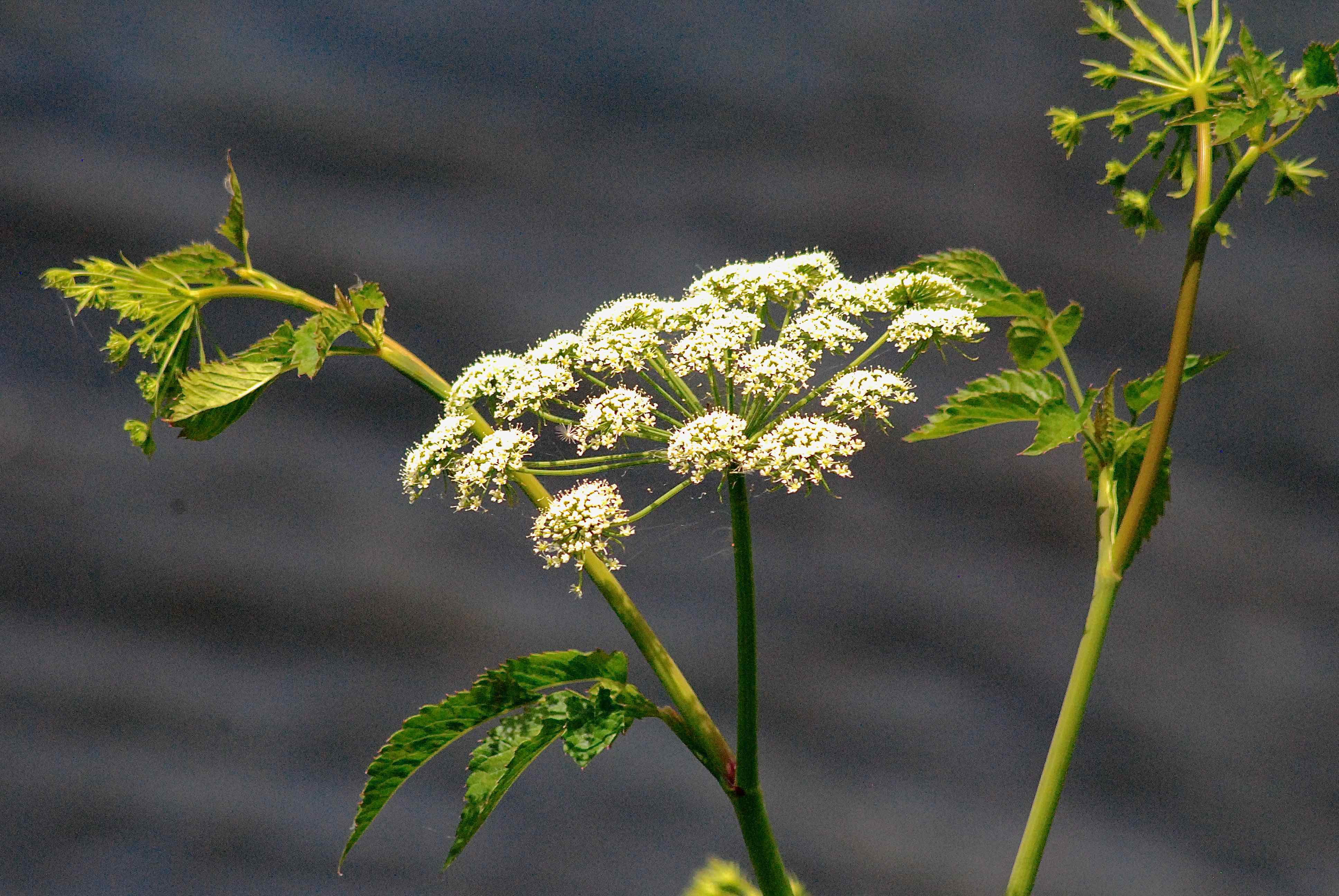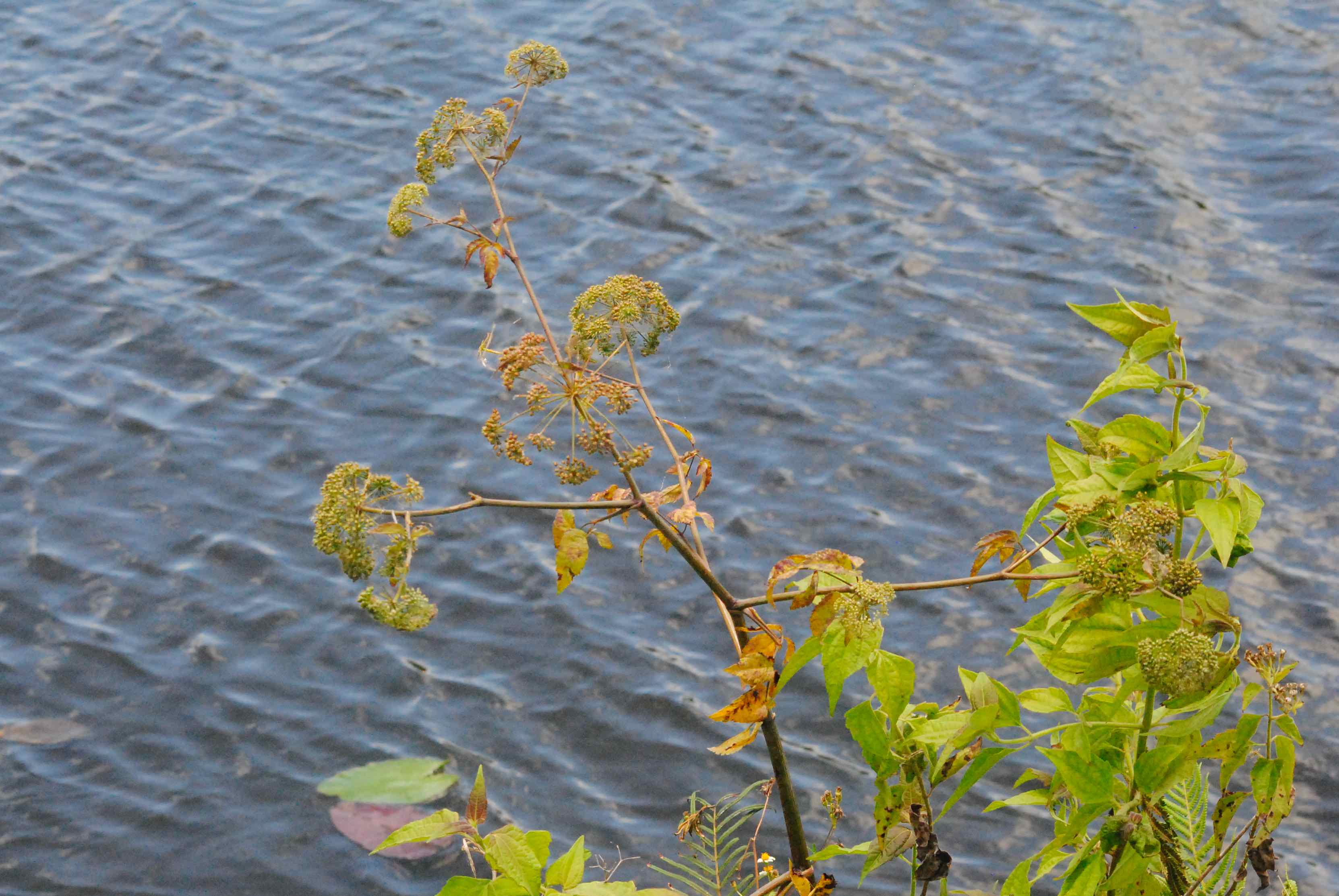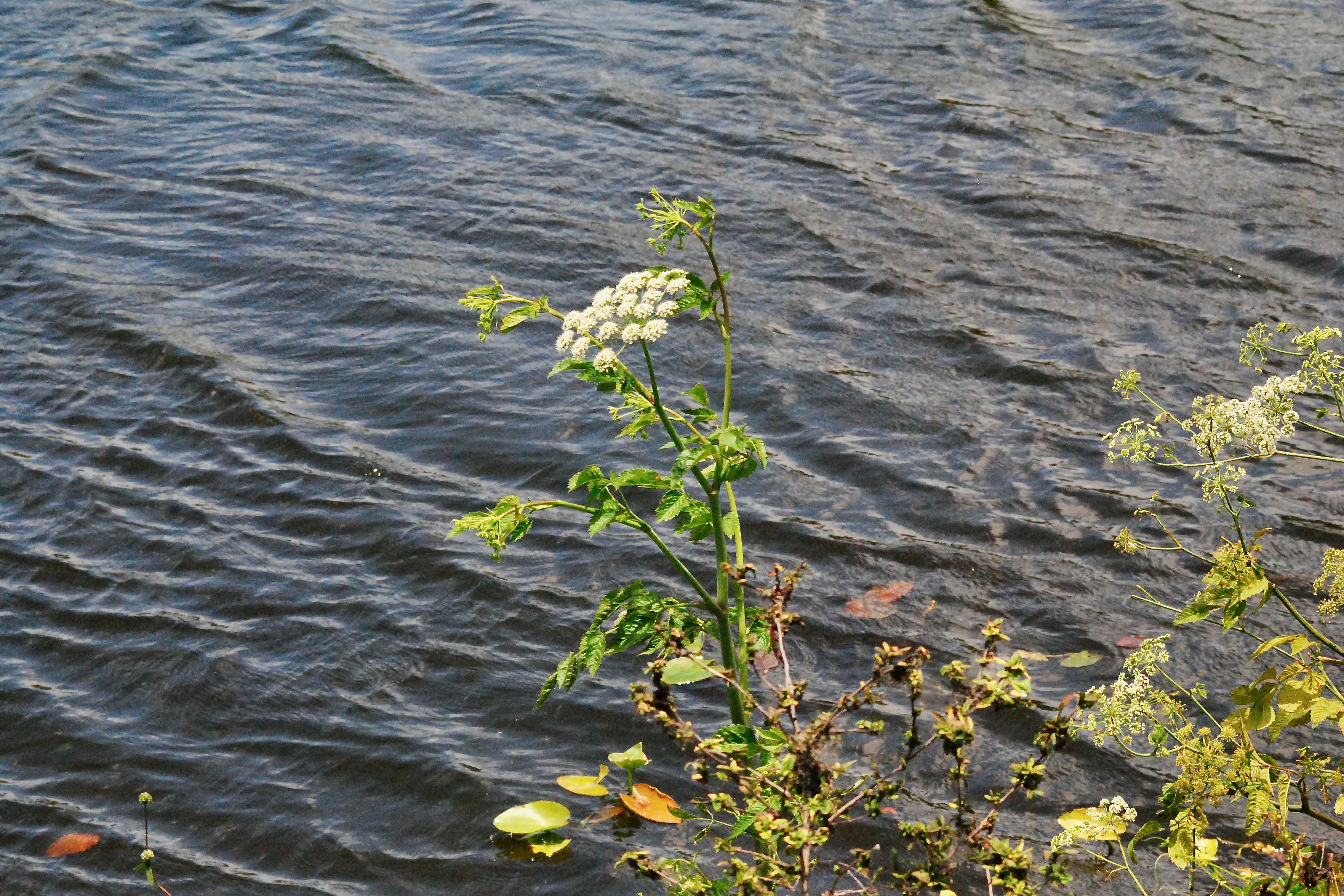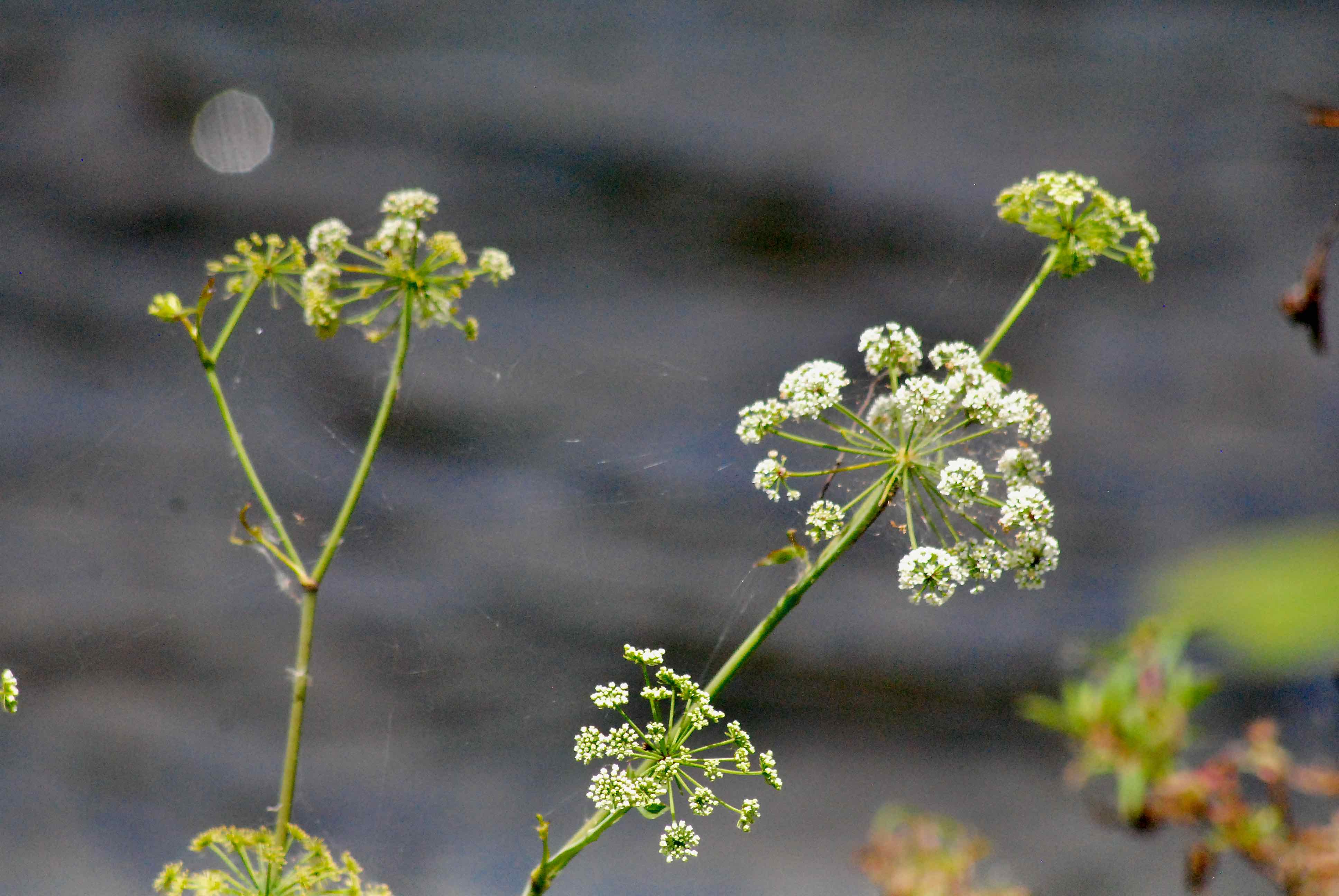
Spotted Water Hemlock, photographed at the Francis S. Taylor Wildlife Management Area, Broward County, in April 2014.
Danger, Will Robinson! Danger! Spotted water hemlock, Cicuta maculata, is one of the most toxic plants on earth. It's related to the hemlock that Socrates used to off himself, but much, much deadlier.
All parts of the plant contain a toxin called cicutoxin, found in all members of genus Ciculata, but the roots especially so. Take a single bite, a small bite, and within an hour or so, the symptoms begin: delirium, nausea, abdominal pain, convulsions, seizures, coma — and possibly even death.
The plant looks harmless enough, the stem sort of celery-like, the root carrot-like, which can fool the unwary forager into thinking spotted water hemlock is edible. Spotted water hemlock's resemblance to carrots makes perfect sense, since it is a member of Apiaceae, the carrot family. It has large, compound umbrella-shaped clusters of small, white, five-petal flowers called umbels. The umbels are six inches across, with 10 to 12 mini clusters, or umbellets, each with 12 to 15 tiny flowers. The leaves are double compound, lance-shaped, with coarse teeth along the edges. Slice the lower stem and the root diagonally and air chambers are revealed. The fruit is corky and round. The plant can be quite tall, as much as eight feet, depending on where it's growing.
Like many other wild members of the Apiaceae family, spotted water hemlock is found in wet habitats, as its name suggests. Shorelines, wet meadows and swamps are home for this plant. It's found throughout most of Florida, including all of South Florida, and most of the United States and Canada into the far northern reaches of the continent.
According to the U.S. Forest Service, some taxonomists consider spotted hemlock two species, with our guy covering most of North America and western water hemlock, Cicuta douglasii, found west of the Rockies. Still deadly regardless of how it's classified.
Most mammals stay away from spotted water hemock, but grazing livestock have been known to eat the stuff — and die. The Cornell University's Department of Animal Science ranks it with rosary pea and castor bean (the source of ricin) as three of the world's deadliest plants.
But that doesn't mean spotted water hemlock is virtueless . The flowers attract numerous species of beneficial bees and wasps. In fact, some actually grow it for that reason. Spotted water hemlock is a host plant for the black swallowtail butterfly. Some birds eat the fruit without ill effect, although there is anecdotal evidence that eating those birds will make you sick.
And even for us humans, spotted water hemlock seems to have some benefit. It was widely used by Native Americans as a medicine, of all things. A strange choice in some instances, more benign in others.The Cherokee, for example used spotted water hemlock in a ceremony to predict the lifespan of a person. One would chew the root, and if he/she became dizzy as a result, his/her life would be short (possibly very short). If not, a long life awaited. They also used it as a permanent form of birth control; a woman would chew on a piece of root and swallow it and be rendered infertile for life, assuming she lived. (A similar treatment was used to sterilize men.)
They also used the roots to prepare seed corn for planting so that insects would stay away. The Chippewa smoked the seeds with tobacco. The Klamath would mix the root with either rattlesnake venom or the liver of a dead animal and tip arrows with the resulting concoction. Several tribes used it externally to relieve various aches and pains. The Seminoles made a bath with the whole plant as a way to break fevers. For what it's worth, the source of the poison Socrates used to kill himself was Conium maculatum, which grows in the Mediterranean region of Europe. Spotted water hemlock grows only in North America.
Other common names include water hemlock, common water hemlock, poison parsnip, spotted cow bane and spotted parsley. Water hemlock is used as a generic name for members of the Cicuta genus.
Click on photo for larger image
Links for Spotted Water Hemlock



